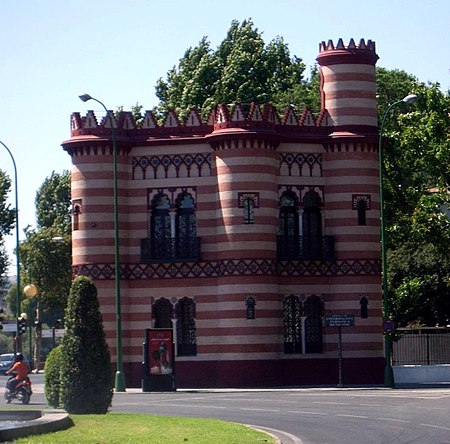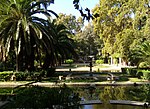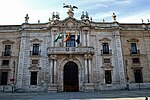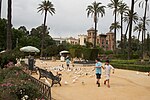Costurero de la Reina

The Costurero de la Reina (literally, the Queen's sewing box) is a building constructed in the late nineteenth century in the gardens of the Palace of San Telmo, now the Maria Luisa Park in Seville, Spain. This unique building takes the form of a small hexagonal castle with turrets at the corners.The building was the guard house or garden retreat. It is the oldest building in Seville in the neomudéjar style. The name comes from a popular tradition that Mercedes of Orléans, the future wife of King Alfonso XII of Spain, retired to the pavilion where she passed her time sewing. The reality is more prosaic. The formal name is the "Pavilion of San Telmo". Mercedes died of typhus about fifteen years before the building was erected in 1893.Nowadays the Costurero de la Reina lodges the tourist information office on the ground floor. The opening times are 9-2 pm and 3.30 to 7.30 pm, on weekdays and 10-2pm during weekends and bank holidays. The building was restored in the spring of 2007 to repair the main structure and to arrange the interior in order to make it more functional. The first floor was refurbished recently and it is used as meetings and events room of the local government.
Excerpt from the Wikipedia article Costurero de la Reina (License: CC BY-SA 3.0, Authors, Images).Costurero de la Reina
Paseo de las Delicias, Seville Casco Antiguo
Geographical coordinates (GPS) Address External links Nearby Places Show on map
Geographical coordinates (GPS)
| Latitude | Longitude |
|---|---|
| N 37.37604 ° | E -5.991518 ° |
Address
Costurero de la Reina
Paseo de las Delicias
41011 Seville, Casco Antiguo
Andalusia, Spain
Open on Google Maps











